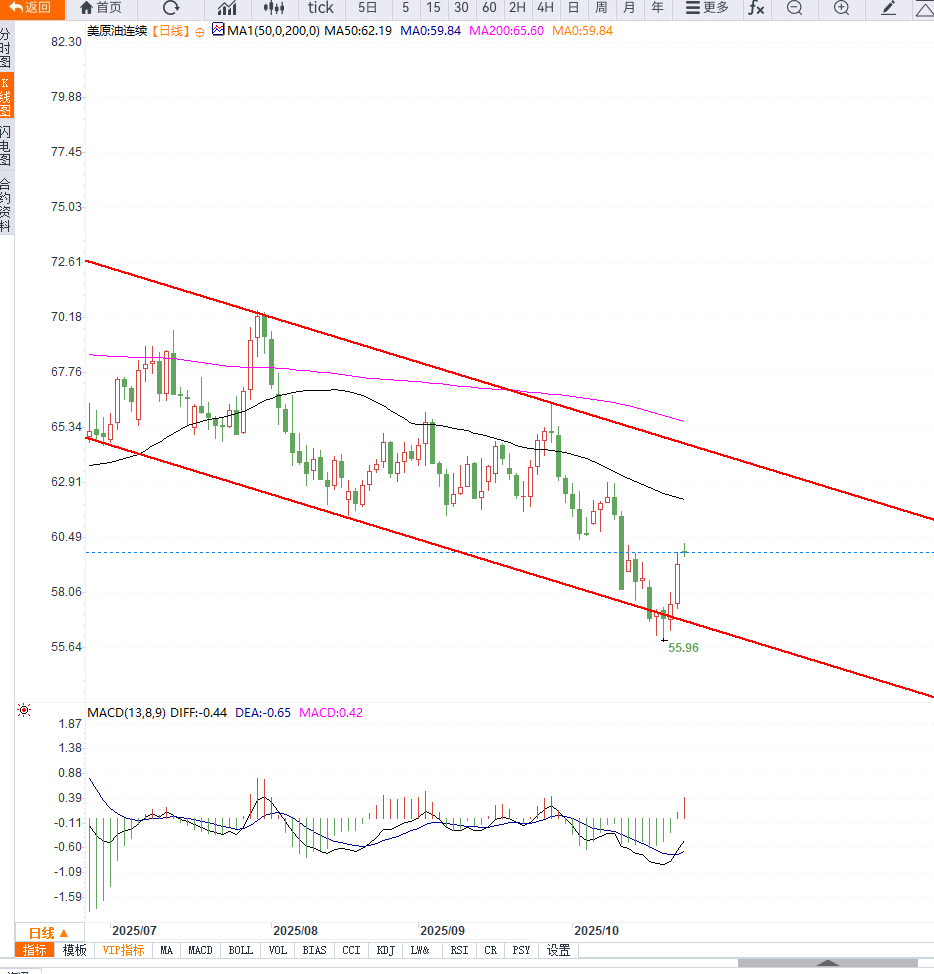Crude oil trading reminder: US sanctions on two Russian oil giants and falling inventories push oil prices back up
2025-10-23 09:34:22
According to the United States, the targets of the sanctions include Russian state-owned energy giants Rosneft and Lukoil, whose combined exports account for nearly half of Russia's overseas crude oil supply.
This means that if sanctions are expanded, the global crude oil supply chain may face structural disruptions, especially in the European and Asian markets. US President Trump is also pressuring Asian countries and India to reduce their purchases of Russian oil, further weakening Moscow's oil revenue.

Meanwhile, the US has announced it will directly communicate with Asian countries regarding the flow of Russian crude oil during a meeting in South Korea next week. Europe has also tightened its policies, with new sanctions expected to be formally implemented this week.
From the perspective of supply and demand structure, Russian crude oil plays a key role in the energy systems of Europe and Asia. If exports are restricted, major importing countries will be forced to look for alternative sources, which will invisibly increase global transportation costs and regional price differences.
Although global demand recovery still faces pressure, geopolitical premiums and tightening supply expectations are becoming the core driving forces behind the current oil price rebound.
The inventory report for the week ending October 17 released by the U.S. Energy Information Administration (EIA) on October 22 showed that U.S. crude oil and refined oil inventories showed an overall downward trend, driven by increased refining activities and increased demand.
Commercial crude oil inventories fell by 961,000 barrels, or 0.2%, to 422.8 million barrels, significantly lower than the market's expectation of a 1.2 million-barrel increase. Crude oil inventories at Cushing, Oklahoma, also fell by 770,000 barrels. Strategic Petroleum Reserve (SPR) inventories increased by 800,000 barrels, or 0.2%, to 408.6 million barrels, indicating that the United States is steadily replenishing its strategic reserves.
According to market research, some institutions pointed out that if sanctions continue to escalate, Russia's crude oil exports may be subject to medium- and long-term restrictions, and the supply gap may gradually be filled by shale oil from the Middle East and the United States, but short-term price fluctuations will increase significantly.
From the daily chart structure, after experiencing a sharp decline in the previous period, WTI crude oil gained buying power near the key support area, and the price returned to above the short-term moving average, showing signs of a temporary halt in the decline and stabilization.
Currently, oil prices are rebounding towards the $60 mark. If they break through and stabilize at this level in the future, the bulls are expected to extend further to the $62-63 area; but if the rebound is weak, the price may retrace to the short-term support of $57, and the risk of further retracement still needs to be paid attention to.
Overall, the short-term trend is jointly dominated by geopolitical risks and the pace of EIA destocking. Against the backdrop of the geopolitical premium not subsiding and weekly inventories still declining, the technical side is in the rebound and repair stage, but the trend has not yet completely reversed. Although bullish sentiment prevails, we still need to guard against a surge and decline caused by sudden news.

Editor's opinion:
Oil market pricing has entered a geopolitically driven phase. If sanctions expand, the trade deadlock persists, and Asian sourcing chains remain unstabilized, oil prices could remain volatile. However, the medium- to long-term outlook depends on the strength of demand recovery and whether OPEC+ will adjust its production policy in the future. Short-term bulls have the upper hand, but caution is advised against further declines as the trend remains intact.
- Risk Warning and Disclaimer
- The market involves risk, and trading may not be suitable for all investors. This article is for reference only and does not constitute personal investment advice, nor does it take into account certain users’ specific investment objectives, financial situation, or other needs. Any investment decisions made based on this information are at your own risk.





















